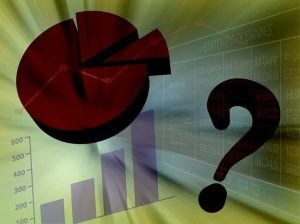Learn More Supply Chain 3.0
In the previous blog entry of this series, I have outlined a customer centric business model, which is also captured in my book The 5-Star Business Network. Now let us delve into the evolution of supply chain models, or how Supply Chain 3.0 came about.
In the old model of supply chains, businesses used to relate to each other in a very linear model
The customer centric model mentioned in the previous post is still a model of last decade and later in this piece we will see the reasons for this assertion.
First, let us examine the impact of this model in practice of the commerce as conducted by many companies today.
Due to persistence of traditional supplier-buyer relationships, when this model is applied across multiple organisations it morphs into an unworkable hierarchical structure shown in Figure 1 below.
Traditional Model Supply Chain 3.0

Figure 1 – Traditional Supply Chain Collaboration Model – Supply Chain 2.0 or less
Imagine if 5 of more organisations are linked in a multi-layer structure shown above. Unfortunately, that happens to be the case with many large organisations that compete with Apple in the market-place today.
While such a structure minimises cost and responds predictably to all external stimuli, it is not suitable for the world of rapid change we live in today.
Today, businesses collaborate in a robust network
Success of Apple has shown that in the next decade this model needs to be supplemented by an even more evolved model which we have called Efficient Global Leadership model (EGL model for short).
In this model we recognise that no single organisation by itself is in a position to service all the needs of a customer relating to even a single product.
The fact is that two or more, in general three organisations come together as a supply chain, work together collaboratively, to fulfil the customer’s need.
Business Model Supply Chain 3.0

Customers at the heart of your supply chain
As shown in Figure 2, each one of these organisations work in close harmony with each other, where the research & development teams of each organisation work together as do marketing teams and even sales teams of these organisations.
To create products, and then to manufacture those products, the production teams and the procurement teams work together to put those products in customer’s hands.
In such a model, close collaboration is required among the supply chain partners to create market and sell the products.
Similarly, close cooperation is also required to produce the products, move the products and store the products in such a way that highly innovative products are produced in shortest period of time at a fraction of the cost of traditional products and put in customers’ hands extremely quickly.
Needless to say, when Apple manages to put out one innovative product after another in the market place, it is not only its own innovation but also an innovation of all its partners, which is at play here.
Only when companies work together in such an efficient leadership model, do they achieve the level of success which Apple has achieved over the last 5 to 10 years. Figure 3 reminds one of the team huddles as shown below:
Unity Of Supply Chain 3.0

When an individual works on his own he is neither very efficient, nor very effective.
That is the key reason, from early civilisations, humans have created organisations that give them the benefit of either effectiveness, or efficiency, or a bit of both.
Figure 4, on the other hand reminds one of camel trains or dog sleds – where one animal is closely following another as shown in the picture below. Now imagine what would happen to the whole camel train, if the first beast lost its way!
Desert of Supply Chain 3.0

Naturally, the question is why is this important? Think about it for a minute. In fact, stop reading and just reflect on the metaphors. A camel train was a great technology – but is now largely redundant.
Moreover, with a limited room to collaborate, it is essentially a command and control organisation. In periods of rapid development, if such organisations stick to the tried and tested, they get left behind by their more innovative peers.
If you would like to see how Supply Chain 3.0 differ vastly from its predecessors, please read the next blog entry of this series.
The 5-STAR Business Network: And The CEOs Who Are Building The Next Generation Of Super Corporations With It

Learn More Supply Chain 3.0 In the previous blog entry of this series, I have outlined a customer centric business model, which is also captured in my book The 5-Star Business Network. Now let us delve into the evolution of supply chain models, or how Supply Chain 3.0 came about. In the old model of supply chains, businesses used to relate to each other in
URL: https://www.amazon.com/The-5-STAR-Business-Network-Corporations/dp/061579419X
Author: Vivek Sood
5
